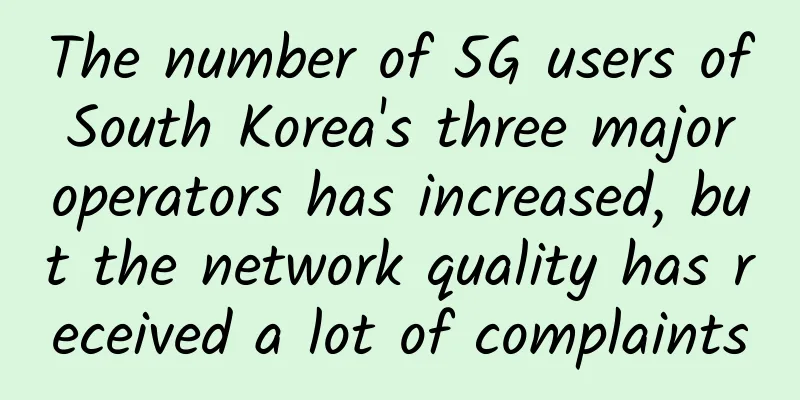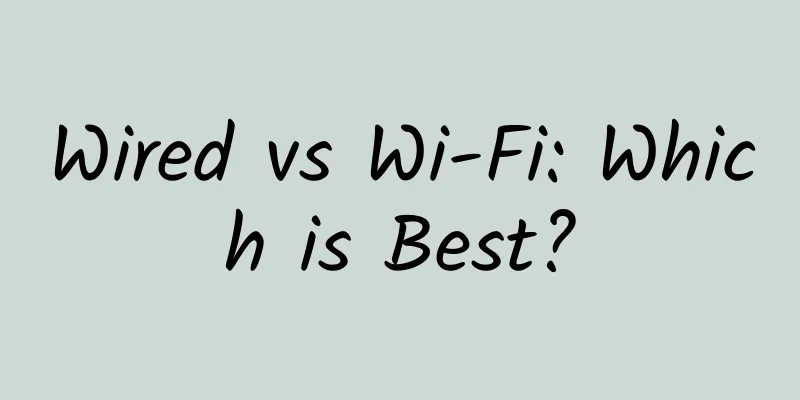The Legend of Network Protocols (IV): Be Careful in the Evolutionary Path

|
Vinton Cerf, who is revered as the "Father of the Internet", later went to Google and is still doing what he loves. Speaking of the Internet he helped to invent, he seemed full of surprise: "New things such as social networks, business applications, and mobile devices are constantly pouring into the Internet. The scale of the Internet has grown by more than a million times. Not many things can develop as continuously as the Internet. But the old protocols we created are still available." Yes, after the test of time, the old protocols are "still available", and all the greatness or pride is revealed here.
(Photo source: Baotu.com) The long process of fine-tuning the protocol evolution The core protocols of the Internet have hardly changed significantly for a long time. People in the industry should still remember that in the 1980s, after TCP/IP became the basic protocol of the Internet, most traffic on the network only needed to use a few core protocols: IPv4 (routing data packets), TCP (converting data packets into connections), SSL/TLS (encrypting connections), DNS (naming the connected host) and HTTP (Hypertext Transfer Protocol). After many years, we found that the technical evolution of these core protocols has only made some minor adjustments: TCP has implemented congestion control, TLS has slowly completed minor modifications, DNS has introduced security extension protocols, and HTTP has added some new headers and methods. The only significant change is the evolution from IPv4 to IPv6, which is also receiving high attention from network operators. The slogan of IPv6 is enough to attract attention: every grain of sand on the earth will be assigned an IP address. It aims to solve the problem that IPv4 address resources are about to be exhausted. [The IPv4 protocol was born in 1981. At that time, only a few computers were connected to the Internet. Later, in addition to computers, mobile phones, e-readers, set-top boxes, Internet TVs, many devices in smart power, cameras and sensors in urban monitoring, medical equipment, etc., flocked to the Internet.] IPv6 is not new, and its development in China has been dubbed as "getting up early and catching up late". Under the current situation, the development of IPv6 will be driven by both the state and the market, and the driving force at the national policy level was strongly launched again in November 2017. In fact, my country proposed the IPv6 development plan as early as 2003. It can be seen that the technical evolution of network protocols affects the whole body, and it does require strategic guidance at the government level, which is not easy. Unsafe network protocols The address problem is just the tip of the iceberg. In the future, TCP/IP will also face new applications such as augmented reality (AR/VR), Internet of Things (IoT), autonomous driving, tactile Internet, artificial intelligence (AI)/machine learning (ML), etc. The impact of these applications on them is no longer just a simple IP address resource issue, nor is it just about end-to-end IP connection, quality of service (QoS), security, mobility, intelligent network management, and profitable business models. These issues will pose great challenges to the application types, technical capabilities, and theoretical assumptions that network protocols such as TCP/IP rely on when they were first designed. The Internet is a great invention of mankind, but it has never been developed based on the latest protocols and standards. Otherwise, it would not have required nearly 5,000 protocol standards to form the current structure. The Internet brings these protocols together to form an extremely complex whole to support the original applications and the new applications that are constantly added. Network protocols have always been under pressure to evolve and iterate. Old protocols cannot remain at the "usable" level forever. Just like the early network protocol families that once shone brightly, today, only the TCP/IP protocol is still being improved, and many new protocols have been generated. Other network protocols have almost stagnated, and no one even talks about or uses them anymore. Network protocols are entering a time of change Today, even more significant changes are taking place—core Internet protocols are also undergoing major changes. Although this change will maintain compatibility with existing networks to the greatest extent possible, it will still have a significant impact on the majority of Internet users. Mark Nottingham (member of the Internet Architecture Board and co-chair of the HTTP and QUIC working groups of the IETF) believes that the driving force behind the Internet's embrace of major changes is that the many limitations of the core Internet protocols have become very obvious, especially in terms of performance, which has caused major problems. Due to the shortcomings of the application and transmission protocol's own structure, network resources cannot be effectively utilized, which in turn leads to poor performance experience for end users, especially in terms of latency. Because of this, the industry has a strong incentive to evolve or replace these existing protocols - as there is ample evidence that even small performance gains can have a huge impact on the user experience. Another urgent crisis is that if the process of this core evolution is delayed, the future Internet may lose the opportunity to change - HTTP proxies that compress responses make it difficult for us to deploy new compression technologies; TCP optimization mechanisms in middleware also make it difficult for us to improve existing TCP - as time goes by, the evolution of the Internet protocol will become more and more difficult, until it is impossible to move forward. The matter is far from over. Among the series of problems exposed after the commercialization of the Internet, the most thorny and difficult to solve is the security issue. The "Prism Gate" incident of Edward Snowden in 2013 made every ordinary citizen realize the importance of network security. At this time, we have encountered a special existence in network protocols - network security protocol. It is special because it has now become the main battlefield of network protocol technology evolution, and its technological evolution path has become more muddy. References:
|
<<: The Legend of Network Protocol (III): The Glorious Family Goes East and West
>>: The legend of network protocols (V): The shadow of a great power is hard to eliminate
Recommend
How does 5G use spectrum? This article tells you everything!
As we all know, wireless spectrum resources are t...
Number One "Thousand Faces" - What you see may not be me
[[423706]] Do you have such troubles? It's in...
DIY is not the best way to implement SD-WAN
Wide Area Networks (WANs) are not designed for th...
Hosteons: $7/month VDS-Ryzen7950x/4GB/25GB NVMe/15TB@10Gbps/Salt Lake City Data Center
Hosteons tested the Hybrid Servers (VDS) product ...
Use data to tell you the current status of IPv6 development in China in 2021
A few days ago, Xiao Wei shared with everyone the...
Krypt September: Cloud Server $120/year, 2vCPU/2GB/60GB SSD/3TB, Support Windows/Linux, Los Angeles/San Jose
Krypt has released the September discount informa...
66 Cloud's 4th anniversary, 20% off monthly VPS and 40% off annual VPS, Hong Kong CMI/US CN2 GIA/AS9929/Japan Softbank, etc.
666clouds recently launched an event for New Year...
Network Automation Market to Surge Over the Next Decade
According to the latest forecast from Future Mark...
CloudCone 5th Anniversary: $14/year KVM-dual core, 1G memory, 41G hard disk, 5TB/1Gbps, Los Angeles data center
CloudCone has been established for 5 years. The c...
Leading the new trend of the trillion-dollar cloud video market, Huichang Communication was successfully listed on the Growth Enterprise Market
On January 25, 2017, Shanghai Huichang Communicat...
Advanced Web Essentials: Network Optimization, Use It to Impress the Interviewer
Preface I've been so busy lately, the app is ...
Gigabit broadband: speed for speed’s sake?
At this year's Broadband World Forum (BBWF 20...
What is coming will come. Taiwan may shut down 3G this year.
According to Taiwanese media reports, Chunghwa Te...
Motorola Solutions and Zhongrui Technology Launch MOTOTRBO™R2 to Enter a New Era of Digital Trunk Communications
On May 23, 2023 , Beijing Motorola Solutions (Chi...
NIST aims to make frequency sharing more efficient for wireless networks
Machine learning solutions will help different ra...









